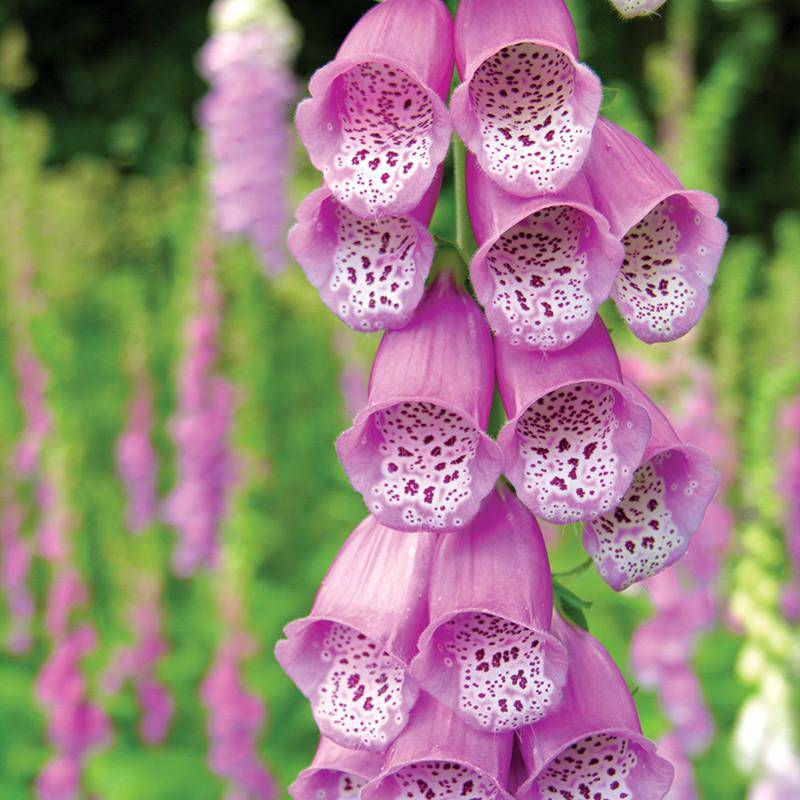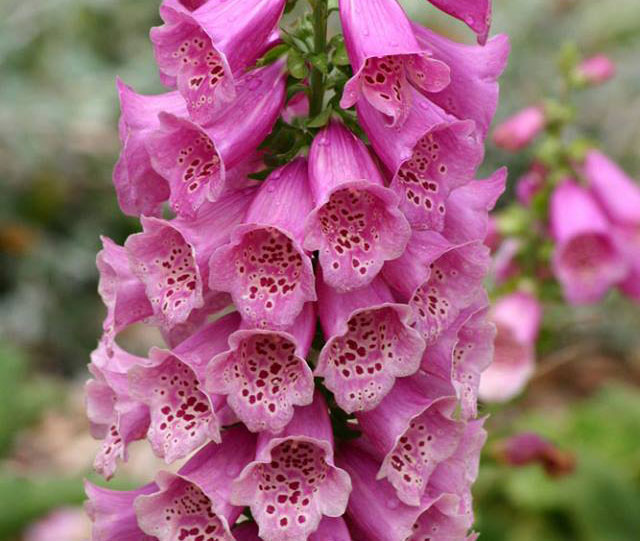Foxglove, scientifically known as Digitalis purpurea, is a biennial plant that has captured the attention of botanists, herbalists, and gardeners for centuries. With its tall, spire-like blooms and striking colors, it’s not only a visual delight but also a plant with deep historical and medicinal significance. In this comprehensive guide, we’ll explore everything you need to know about foxglove, from its origins and symbolism to how to grow and care for it.
Table of Contents
– Origins and Etymology of the Foxglove Flower
– Symbolic Meanings of the Foxglove Flower
– Historical Significance of the Foxglove Flower
– Different Varieties of Foxgloves and Their Meanings
– Foxglove Flower in Art and Literature
– Cultural Significance of the Foxglove Flower
– How to Grow and Care for Foxgloves
– Conclusion
Origins and Etymology of the Foxglove Flower
The name “foxglove” is derived from Old English, where it was called “foxes glofa,” meaning “glove of the fox.” This name likely comes from the flower’s glove-like shape, which resembles a small hand or finger. The scientific name Digitalis comes from the Latin word “digitus,” meaning finger, further emphasizing the plant’s unique shape. The species name purpurea refers to its purple color, although other varieties come in shades of pink, white, and even yellow.
Symbolic Meanings of the Foxglove Flower
Protection and Good Fortune: In many cultures, foxglove is associated with protection and good luck. Folklore suggests that wearing foxglove could ward off evil spirits and bring prosperity. Its tall spikes were seen as shields against negativity, making it a popular choice in gardens and floral arrangements.
Healing and Transformation: Due to its medicinal properties, foxglove symbolizes healing and transformation. It contains digitalis, a compound used in heart medications, highlighting its importance in traditional medicine and botanical gardens alike.
Bewitching Beauty: The foxglove’s striking appearance and graceful blooms evoke a sense of enchanting beauty. Its tubular flowers, found in shades of pink, purple, or white, attract pollinators and admirers, symbolizing elegance and allure in floral aesthetics.
Historical Significance of the Foxglove Flower
Medicinal Uses: Since ancient times, foxglove has been valued for its medicinal properties. In medieval Europe, it was used in herbal remedies despite its toxicity. Today, digitalis derived from foxglove remains crucial in treating heart conditions, showcasing its enduring role in pharmacology.
Folklore and Traditions: In Celtic folklore, foxglove was associated with fairies and magical beings, believed to gather in foxglove patches. Wearing a foxglove flower was thought to offer protection from fairy mischief, adding to its mystique in garden folklore and herbalism.
Different Varieties of Foxgloves and Their Meanings
Common Foxglove (Digitalis purpurea): Characterized by tall spikes of bell-shaped flowers in shades of purple, pink, and white, it symbolizes healing and enchantment, valued in herbal medicine and garden aesthetics.
Yellow Foxglove (Digitalis lutea): Featuring clusters of small, yellow tubular flowers, it symbolizes warmth, joy, and resilience, thriving in diverse garden settings.
Foxglove Flower in Art and Literature
Foxgloves have inspired artists and writers throughout history, appearing in botanical illustrations and literature as symbols of natural wonder and botanical fascination. They symbolize mystery and transformation, adding depth to poems and stories.
Cultural Significance of the Foxglove Flower
In Western cultures, foxgloves are admired for their ornamental value and symbolic meanings. They grace cottage gardens and wildflower meadows, attracting pollinators and symbolizing good luck and protection in folk traditions.
How to Grow and Care for Foxgloves
Planting: Foxgloves thrive in moist, well-drained soil and partial shade. Sow seeds in early spring or late summer, ensuring adequate spacing for their height.
Caring: Regular watering, deadheading spent flowers, and providing support for tall spikes are essential for healthy growth and continuous blooming.
Conclusion
The foxglove flower embodies protection, healing, and enchanting beauty, resonating through its rich history and enduring popularity worldwide. Whether valued for its medicinal properties, symbolic meanings, or ornamental charm, the foxglove continues to captivate gardeners, artists, and flower enthusiasts with its majestic presence and bewitching allure.














More Stories
What Is Yodo Para Tiroides and How Does It Affect Thyroid Health?
How to Claim Your Joy in League of Legends: A Step-by-Step Guide
What is WSET? A Comprehensive Guide to Wine Education